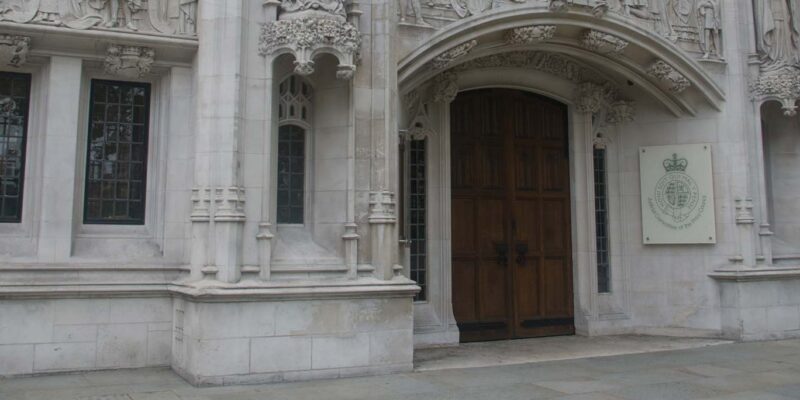Manchester 0161 832 2500 | London City 0204 505 8080 | London Finchley 020 8349 0321
Secure PaymentThe adverse publicity regarding ground rent landlords (including developers) of new build and/or existing blocks of flats or houses that reserve high or potentially high ground rents have a further nasty sting in the tail for tenants of long leases of flats and houses.
This “sting” emerges if the annual ground rent payable by the tenant is more than £1000 for a property in Greater London or more than £250 for a property outside Greater London – whilst this may not be in say the first 20 years of the term of the lease, ground rent could reach those pretty modest (certainly outside Greater London) levels in subsequent years or even when the lease is granted. If so, the Housing Act 1988 (HA 1988) applies.
Housing Act 1988 and Assured Tenancy
The Housing Act 1988 (HA 1988) states that the long lease is an “assured tenancy” – that sounds harmless but it isn’t. Where there is an assured tenancy, the Landlord’s remedies to obtain possession/forfeit the lease are draconian in that it only takes the Tenant to be in 2 months arrears of ground rent and the Landlord can serve notice under section 8 HA and issue proceedings. If the Tenant fails to pay the ground rent arrears before the Court Hearing date, the Court must make a possession order in favour of the Landlord who then gains a valuable long leasehold property (see footnote below) – it would be interesting to know whether landlords have adopted this tactic and how successful landlords have been.
It seems unlikely for tenants to fall into ground rent arrears but unscrupulous landlords may try to exploit this loophole by not serving ground rent demands and hope tenants forget to pay and don’t pay before the time of the Court Hearing for possession.
The bottom line is that this “sting” in the HA 1988 can erode considerably the existing statutory protection afforded to tenants of long leasehold flats or houses
This section 8 HA 1988 procedure shouldn’t be confused with the irrelevant (for long lease terms) defences a tenant has if the landlord brings proceedings for possession under the accelerated section 21 HA 1988 procedure (as amended by the Deregulation Act 2015). The reason it’s irrelevant is that the tenancy deposit and other protections afforded to tenants (preventing a landlord from obtaining possession unless the landlord has complied) won’t apply nor be relevant for long leasehold terms of flats or houses.
However, it’s unclear what attitude lenders are taking with respect to existing long leases where the annual ground rent already is or will hit the above levels during the lease term.
What is clear (and, as is required under the Council of Mortgage Lenders (now UK Finance’s) rule book) is that conveyancers and valuers must review these ground rent provisions and draw them to the attention of their buyer and lender clients. The conveyancer must obtain clearance from the lender at the outset i.e. well in advance of the exchange of contracts before the buyer client incurs significant fees. Unless incentivised with a hefty premium, landlords are unlikely to agree to a deed of variation reducing the ground rent to well below those levels and it will be appreciated that, even if the landlords are prepared to do so, their costs (which can be substantial) will need to be paid by the Seller or Buyer and there will be a delay.
Yes, provided the tenant has been registered at the Land Registry as the owner of the flat or house for at least 2 years (a) the lease term for a flat could be extended under the s42 procedure of the Leasehold Reform (Urban Development) Act 1993 (1993 Act) and (b) for houses, the freehold can be acquired under the Leasehold Reform Act 1967 (1967 Act) but that will come at a cost to a buyer (unless the Seller pays or makes a fair contribution towards the premium and costs) as well as cause delay – the same analysis applies where a flat owner may wish to mortgage or remortgage under section 42 of the 1993 Act (i.e. cost and delay will arise) – with a house. It is important to note, that there is a seldom-used right under the 1967 Act to obtain an extra 50 years’ extension to the lease term and a key reason it is seldom used is that the ground rent is increased in accordance with the modern date annual ground rent rates which could exceed, over time, the nasty £1000 and £250 levels mentioned above.
Tenancies at a low rent and ASTs (including ending ASTs prior to expiry)
As assured shorthold tenancies (ASTs) are a type of assured tenancy, a tenancy cannot be an AST if it does not satisfy the criteria set out in section 1(1) of the Housing Act 1988 (HA 1988), or if it falls within one of the exceptions in Part 1 of Schedule 1 to the HA 1988. The criteria for these tenancies and exceptions are set out in Practice note: overview, Types of residential tenancies: overview.
If, for example, the tenancy was granted after 15 January 1989, it cannot be an assured tenancy (or, by definition, an AST) if it is a tenancy at a low rent, that is:
- Tenancies for no rent (paragraph 3, Schedule 1, HA 1988);
- If the tenancy was granted before 1 April 1990, those where the annual rent was less than two-thirds of the rateable value on 31 March 1990 (paragraph 3B, Schedule 1, HA 1988); or
- If the tenancy was granted on or after 1 April 1990, those where the annual rent was £250 or less, or £1,000 or less in Greater London (paragraph 3A, Schedule 1, HA 1988).
Most leases that reserve a ground rent are usually granted for a premium and are long leases. However, if for example, the ground rent exceeds £250 per annum (or £1000 per annum in Greater London) and the other criteria in the HA 1988 are met, a long lease for which a premium has been paid can be an AST.
One implication of this is that an AST can be brought to an end during the term of the lease by the landlord if one or more of the grounds for possession set out in Schedule 2 to the HA 1988 are made out. This means that if a long leaseholder is in at least 2 months arrears of ground rent under a long lease which qualifies as an AST, a section 8 notice under the HA 1988 could be served under ground 8, which is a mandatory ground. Where the ground is mandatory, the court must grant an order for possession if the landlord can demonstrate the ground (section 7(3), HA 1988).
For further advice or if you have any questions please contact a member of our Property Solicitors by email or call us on 020 8349 0321.


